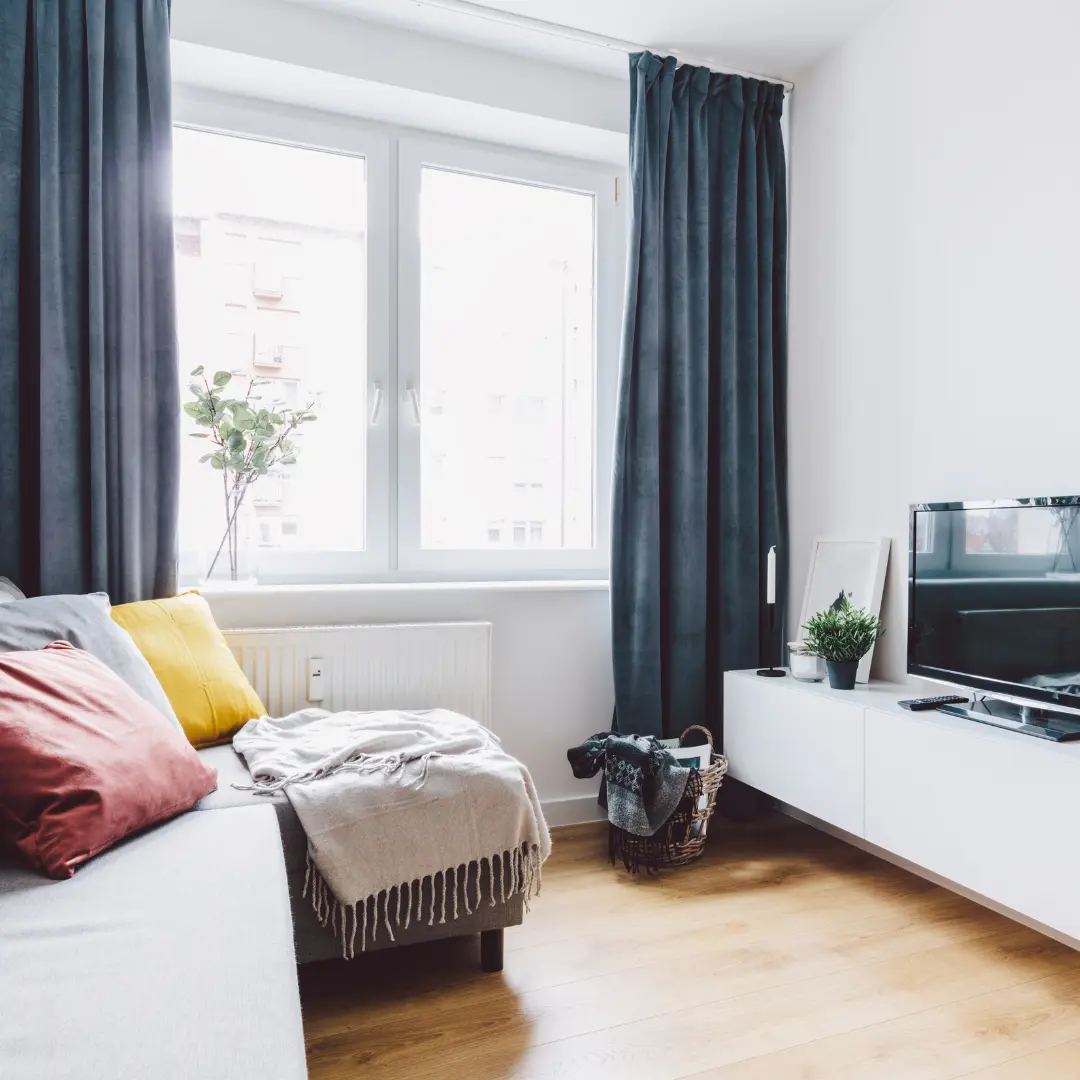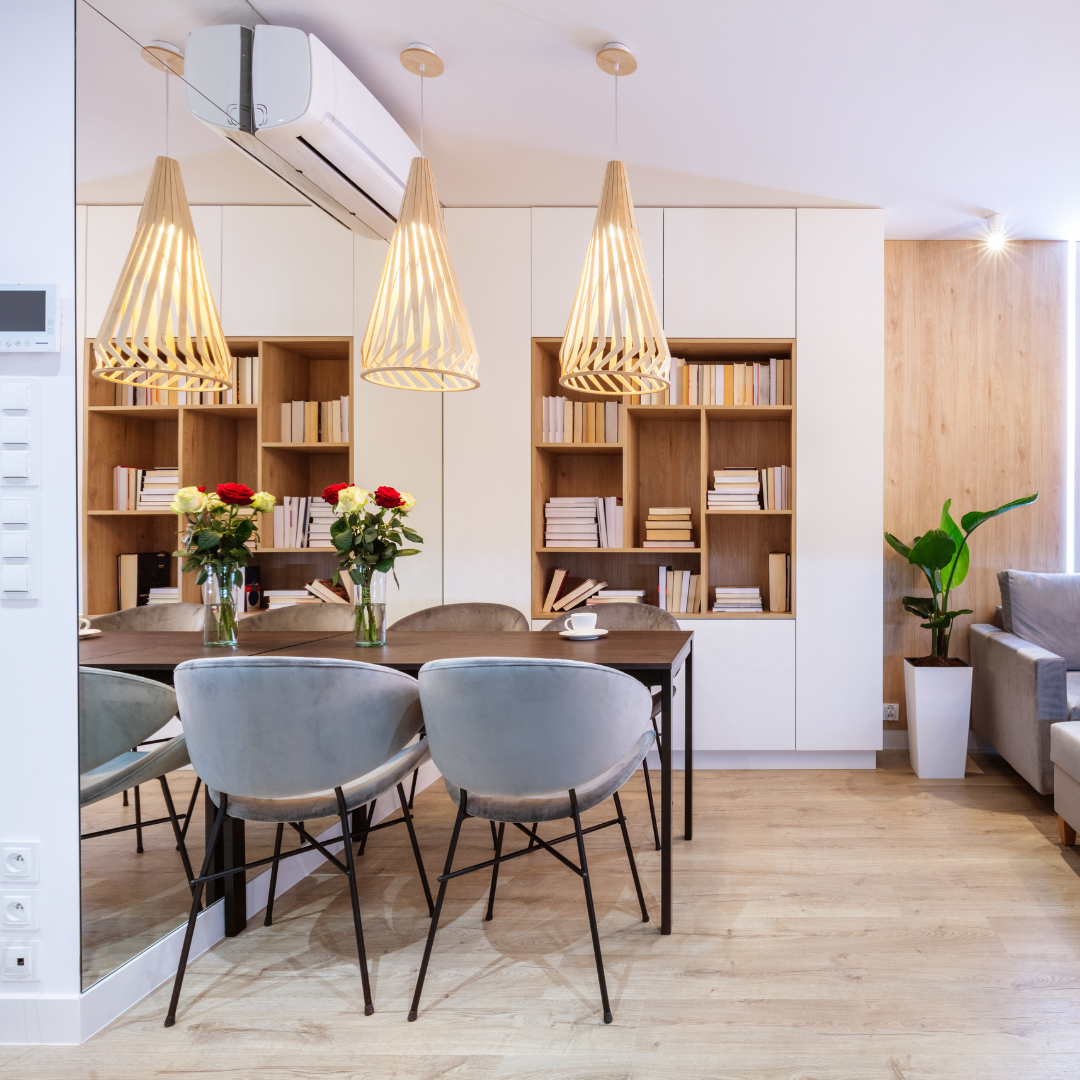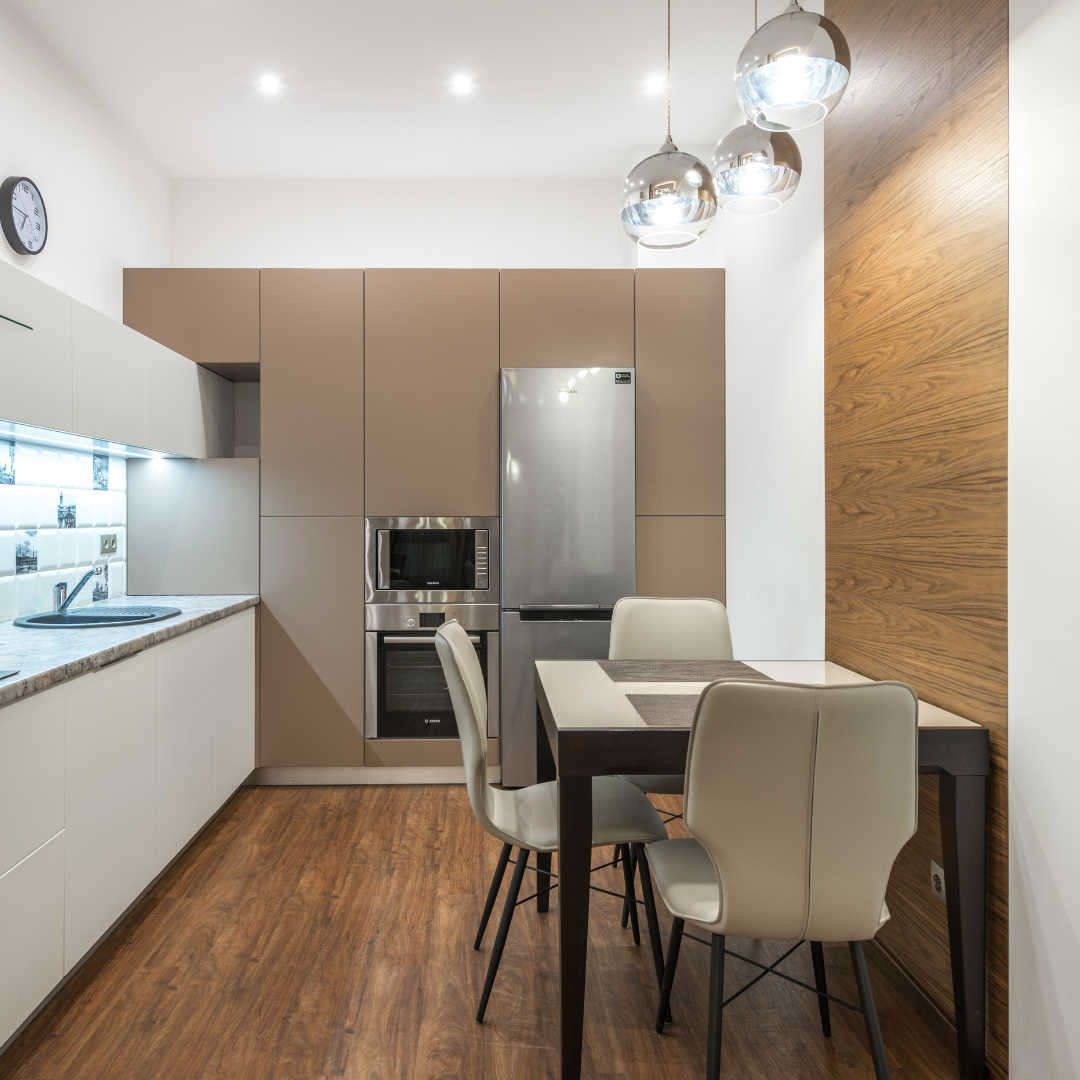
The Art of Small Space Living
Small-Space Living Solutions

1. Multi-Functional Furniture
Investing in multi-functional furniture is a game-changer in small spaces. Look for sofas that double as beds, coffee tables with hidden storage, and fold-out dining tables. These pieces help maximize your space while maintaining practicality.
2. Vertical Storage Solutions
Utilize vertical space to its fullest potential. Install tall bookshelves, floating shelves, and wall-mounted storage units to keep clutter off the floor and create a sense of height in the room.
3. Light and Bright Color Palettes
Light colours, especially whites and pastels, can make a small space feel larger and airier. Consider painting walls, ceilings, and even furniture in these hues to create a sense of openness.
4. Mirrors and Reflective Surfaces
Strategically placing mirrors or using furniture with reflective surfaces can bounce light around the room, making it appear more spacious. Mirrored wall panels and mirrored furniture are stylish options.
5. Declutter Regularly
Small spaces require regular decluttering. Be ruthless about what you keep and get rid of items you no longer use. Donate or sell items that are taking up valuable space.
6. Opt for Minimalist Design
A minimalist design approach emphasizes simplicity and clean lines. Choose furniture and decor items that serve a purpose and avoid excessive ornamentation. This creates a sense of calm and spaciousness.
7. Streamlined Kitchen Solutions
In small kitchens, consider open shelving instead of upper cabinets to make the space feel less closed in. Use hooks and magnetic strips for utensils and pots to free up valuable counter space.
8. Use Area Rugs to Define Spaces
Area rugs can visually define different areas within an open-plan living space. They add warmth and depth to the room while separating distinct functional zones.
9. Embrace Built-In Storage
Custom-built storage solutions, such as built-in cabinets, can maximize space by fitting perfectly into nooks and corners. These can be tailored to your specific storage needs.
10. Flexibility and Adaptability
Lastly, remain flexible in your design choices. As your needs change, your small space should be adaptable. Consider furniture on wheels and modular pieces that can be rearranged to suit different purposes.

Conclusion
In conclusion, small-space living doesn’t have to mean sacrificing comfort or style. With creativity, organization, and thoughtful design choices, you can transform your compact home into a functional and inviting space. Embrace the challenge, and you’ll discover that small-space living can be both practical and aesthetically pleasing.













